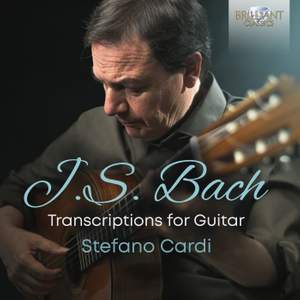In recent decades, Johann Sebastian Bach's (1685–1750) works have undergone numerous transcriptions and adaptations. Since the 1960s, the guitar repertoire has seen the addition of several Bach pieces originally intended for the lute, an instrument that is undoubtedly among the most akin to the modern six-string guitar. Following the increasingly in-depth study of Bach's work and the spread of the classical guitar, several harpsichord pieces have also been transcribed and performed.
This album magnificently displays these pieces by exploiting the rich dynamics and full polyphonic capacity of the guitar. The Clavier-Büchlein vor Wilhelm Friedemann Bach and the Clavier-Büchlein vor Anna Magdalena Bach hold an important place, as these collections offer a glimpse into Bach’s familial and didactic spheres of action. Within the Friedemann Bach collection, we find the two Praeambula (BWV 924 & 926), characterised by arpeggiated writing, probably a model for students to create a first simple improvisation. Further on, the Fantasias that appear in the final part of the collection show a wonderful degree of contrapuntal complexity.
Although there were 2 versions of the Anna Magdalena collection, the one which has survived almost in its entirety seems to have been intended as a family album, with contributions not only from Anna Magdalena (J.S. Bach’s wife), but also from her son Carl Philipp Emanuel and other composers. The pieces in this collection, including vocal pieces written for Anna (an accomplished singer), are most commonly small dance forms characterised by an essential and refined homophonic-style writing. The Anglaise and Minuet from the French Suite No.3, as well as the more solemn Allemande from the French Suite No.4, are clear examples of the gracefulness of these compositions, which show a subtler sound texture than those of other series of Bach suites, as well as a more limited use of counterpoint. Also of exquisite elegance is the Minuet from Partita BWV 825, taken from the first volume of the Clavier-Übung.
This album also includes some famous works, among them the preludes from the French Suite No.3 and Johann Peter Kellner’s collection. These are rather varied pieces, written for teaching purposes and passed down through written transcriptions from Bach’s pupils. Some are extremely short but show some degree of harmonic density and sometimes a rather chromatic style, while others have a slightly broader structure and a writing more similar to the Inventions, with a systematic use of counterpoint.
The album also features works from other prominent composers – George Philipp Telemann (1681–1787) and C.P.E. Bach (1714–1788) – as well as two lesser-known composers, Gottfried Heinrich Stölzel (1690–1749) and Christian Petzold (1677–1733).





